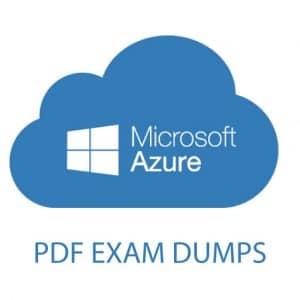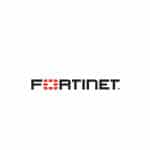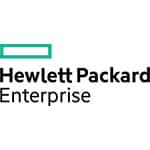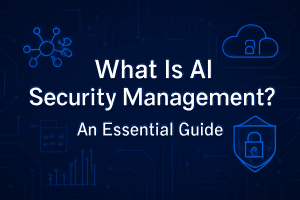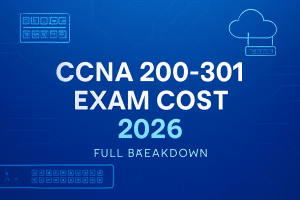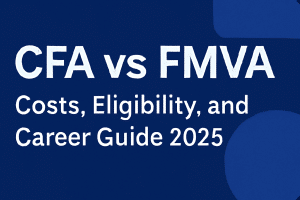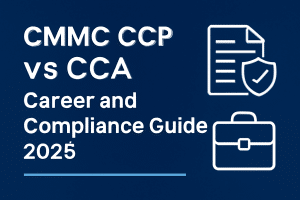TL;DR
Exam dumps are often advertised as “100% accurate,” but their real reliability is far lower. Most are built from memory or unauthorized leaks, making them outdated, incomplete, or simply wrong. In the first half of our guide, we explain how exam dumps are collected, what “accuracy” truly means, and why relying on them can lead to exam failure or certification bans.
When “Exact Questions” Don’t Add Up
Imagine a candidate who downloaded a set of “latest 2025 exam questions” for a CompTIA or Cisco exam. On test day, half the questions look completely unfamiliar. This isn’t bad luck; it’s how exam dumps usually work. Their accuracy is inconsistent, and their marketing often exaggerates reality. This guide begins by unpacking how accuracy is defined and how dumps are created.
Understanding Exam Dump Accuracy
Before we can measure accuracy, we have to define it.
In the context of exam dumps, accuracy means more than just having some correct answers.
Three Elements of Accuracy
- Question Match
How many of the dump’s questions are actually present in the real exam? - Answer Correctness
Are the provided answers factually and contextually correct? - Coverage of Syllabus
Does the dump cover the full range of exam objectives, not just a subset?
A truly accurate dump would need to score well on all three. In reality, most fail on at least one.
Different Types of Exam Dumps
Not all dumps are the same. Some aim for quantity, others for speed of sharing, and each type has its own weaknesses.
| Type of Dump | What It Contains | Common Accuracy Problems |
| Free PDF Dumps | Collections of recalled questions and answers | Usually outdated and unchecked |
| Answer Dumps | Supposed correct answers without questions | Often mismatched or incomplete |
| Exam Brain Dumps | Questions remembered by test takers | Missing details, context errors |
| Pass4sure-Style Dumps | Paid PDFs marketed as “guaranteed pass” | Same flaws as free dumps but more expensive |
Even with paid options, vendor policy violations and content errors remain unavoidable.
The Marketing vs. Reality Gap
Websites promoting dumps often use words like “verified” or “latest.”
But since vendors continuously update exam questions, no dump can guarantee complete accuracy for long.
How Dumps Are Collected
To understand why accuracy is unreliable, it’s important to see how exam dumps are made. Most come from three key sources, each of which introduces errors.
1. Memory Recall
After taking an exam, some candidates write down what they remember:
- Human memory is fallible; questions may be misremembered or incomplete.
- Multi-step scenarios are especially hard to recall accurately.
2. Unauthorized Leaks
Occasionally, insiders leak question banks.
- Vendors quickly invalidate these versions once discovered.
- Dumps based on leaked content become outdated within weeks.
3. Community Aggregation
Many dumps are crowdsourced, where multiple users add their recollections to a shared document.
- This mix of inputs creates formatting errors and answer mismatches.
- No expert review ensures consistency.
| Source | Initial Accuracy | Longevity |
| Memory Recall | Low to Medium | Quickly declines |
| Unauthorized Leak | High at first | Drops as soon as vendor updates the exam |
| Crowdsourced | Highly variable | Unstable and inconsistent |
These processes explain why even “newly updated” dumps can contain outdated or wrong questions within weeks of release.
Why Accuracy Declines Over Time
Exam vendors like Microsoft, Cisco, and AWS refresh their question pools frequently.
- Entire question sets can be retired overnight.
- New question types—drag-and-drop, scenario-based tasks—are added to reduce predictability.
Because exam dumps are not part of the official update cycle, their accuracy steadily erodes the moment they are published.
Common Accuracy Issues in Exam Dumps
Even when a dump claims “verified for 2025,” there are recurring problems that candidates encounter:
1. Partial Questions
Often, dumps include incomplete scenarios. For example, a networking exam may give the first part of a troubleshooting scenario but omit the critical follow-up steps. Candidates practicing these incomplete questions may get confused during the actual exam.
2. Incorrect Answers
Not every answer in a dump is correct. Even if a question matches the real exam:
- Multiple-choice questions may have the wrong option marked as correct.
- Scenario-based questions may have overly simplified solutions that don’t reflect the official scoring rules.
3. Syllabus Gaps
Many dumps focus on popular topics while neglecting less common but still important exam objectives:
- Security+ SY0-701: often emphasizes cryptography but omits IoT risks
- AWS SAA-C03: might cover EC2 and S3 but skip newer services like Fargate or DataSync
This creates a false sense of preparedness.
4. Outdated Formats
Exams increasingly use interactive question types, like drag-and-drop or simulations. Traditional dumps are almost always limited to static multiple-choice questions, which fails to prepare candidates for practical tasks.
Real Candidate Experiences
To understand the impact, let’s consider real examples:
| Exam | Dump Type | Candidate Feedback | Result |
| SY0-701 | Free PDF | Found 40% of questions mismatched | Failed on first attempt |
| AWS SAA-C03 | Paid dump | Scenario questions missing details | Passed but struggled on labs |
| Cisco CCNA 200-301 | Brain dump | Outdated IP addressing questions | Required additional study to pass |
These examples highlight that accuracy issues directly affect pass rates and confidence.
Risks of Relying on Inaccurate Dumps
Exam Failure
The most obvious risk is failing the exam due to wrong or missing content.
Certification Ban
Using unauthorized or illegal dumps can trigger:
- Vendor sanctions
- Certification revocation
- Bans from reattempting
Vendors track suspicious patterns and may flag candidates who rely heavily on leaked content.
Wasted Study Time
Time spent memorizing incorrect answers is time lost for learning actual exam objectives.
How Accuracy is Measured in 2025
Researchers and test prep communities evaluate dumps with these benchmarks:
- Question Recall Accuracy – % of dump questions that match official exam questions.
- Answer Accuracy – % of questions with correct answers.
- Coverage Score – How many exam objectives are addressed.
Even top-selling dumps rarely exceed 70–75% overall accuracy across all three dimensions.
Better Alternatives to Improve Accuracy
Instead of relying on uncertain dumps, candidates should:
1. Verified PDF Practice Questions
Sites like Cert Empire provide curated PDFs and exam simulators that are aligned with the latest exam objectives.
2. Vendor Learning Resources
Official platforms (CompTIA Learn, Microsoft Learn, AWS Training) guarantee complete coverage and updated content.
3. Community-Endorsed Mock Tests
Participating in study forums and structured mock exams ensures exposure to scenario-based questions and real problem-solving.
4. Hybrid Approach
Combining curated PDFs, vendor resources, and hands-on labs ensures:
- Accurate practice
- Exposure to new question types
- Deep understanding, not rote memorization
Expert Insight
Exam prep experts in 2025 emphasize accuracy over quantity. Memorizing 1,000 dump questions is far less effective than mastering 500 verified questions that cover all objectives. Focus on active learning rather than passive memorization.
Summary of Accuracy Challenges
| Challenge | Impact | How to Mitigate |
| Incomplete questions | Confusion on exam | Use verified PDF dumps and full scenarios |
| Incorrect answers | Misleading preparation | Cross-check answers with official references |
| Coverage gaps | Missed objectives | Use vendor syllabus and curated questions |
| Outdated formats | Poor exam readiness | Practice with simulators and interactive tools |
By understanding these issues, candidates can plan smarter, not harder, and avoid the common traps of relying on unverified dumps.
How to Verify Exam Dump Accuracy
When preparing for any certification, the accuracy of the exam dumps you use is paramount. Using incorrect or outdated questions can not only waste your time but also lead to frustration on exam day. One of the first steps in verifying an exam dump is to cross-check questions with the official syllabus. For instance, if you are preparing for CompTIA SY0-701, compare each question in your PDF dump against the objectives listed on CompTIA’s website. A table format often helps:
| Question Topic | Dump Version | Official Syllabus Match | Notes |
| Access Control | v2.3 | ✅ Matches | Use as practice |
| Threat Detection | v2.3 | ⚠ Partially outdated | Update references |
| Cryptography | v2.3 | ❌ Does not match | Skip or revise |
Candidates should also look for patterns of repeated mistakes. If several questions in a dump consistently contradict official documentation, it’s a red flag. This often happens with older dumps that haven’t been updated after exam revisions.
Another method is to consult forums and study communities. Platforms like Reddit or certification-focused Discord groups often discuss recent exam questions without violating exam rules. If a dump question aligns with what multiple verified candidates report as recently appearing in the exam, you can safely assume it is more accurate. Always make a small note of these cross-verifications for quick review later.
Finally, don’t ignore the quality of explanations in the dump. A real, updated exam dump should provide clear reasoning behind the correct answer, not just the option itself. For example, if a network security question is labeled “Correct: Option B,” there should be a brief explanation of why Option B is correct, perhaps citing RFC standards or vendor best practices. This contextual understanding is what transforms mere memorization into genuine knowledge.
Safe Ways to Use Practice Questions
Exam dumps, when used correctly, can serve as practice questions rather than direct memorization tools. Think of them as a rehearsal for the exam. Here are some safe strategies:
- Integrate with study notes: Instead of reading a dump straight, match each question with your own notes. After answering, write down why each answer is correct or incorrect.
- Time yourself: Simulate actual exam conditions with a timer. This improves time management and stress handling.
- Focus on weak areas: Track topics where you consistently answer incorrectly. Allocate more study time to these subjects.
For instance, a candidate preparing for AWS CLF-C02 might notice consistent mistakes in pricing and billing questions. Instead of blindly memorizing answers from the dump, reviewing the AWS Pricing Calculator and real scenarios will strengthen comprehension. Over time, practice questions evolve into active learning tools, not shortcuts.
Exam Simulator Strategies
An exam simulator takes practice to the next level. Unlike static PDFs, simulators can:
- Randomize questions
- Mimic exam time constraints
- Offer analytics on your performance
When using a simulator, consider the following strategies:
- Set realistic time limits: If your exam allows 90 minutes, practice with 90 minutes. This builds pacing skills.
- Use sectional tests: Focus on one domain at a time (e.g., identity and access management in cloud exams). This ensures deep coverage.
- Review wrong answers immediately: Each incorrect response is a learning opportunity. Avoid moving on without understanding why.
Here’s a quick table showing how simulator techniques impact performance:
| Strategy | Benefit | Example |
| Randomized questions | Reduces memorization | Cloud practice questions appear in different orders each attempt |
| Time-bound practice | Improves pacing | Set 60 questions in 90 minutes |
| Analytics tracking | Identifies weak areas | Dashboard shows 30% wrong in security topics |
When used correctly, simulators can mirror real exam conditions, which drastically reduces anxiety and improves confidence.
Case Studies: Accuracy vs. Preparation Success
Looking at real-world experiences helps to illustrate the value of accurate exam dumps:
- Candidate A used outdated dumps with no explanations. They spent two weeks memorizing answers and failed the exam because scenarios had changed.
- Candidate B combined updated dumps from a trusted source, an exam simulator, and personal notes. They not only passed but reported being able to reason through unseen questions.
- Candidate C relied solely on free dumps with mixed quality. Despite partial preparation, they struggled with scenario-based questions and barely passed.
A summarized table highlights the differences:
| Candidate | Dump Type | Preparation Strategy | Exam Result |
| A | Outdated PDF | Memorization only | Failed |
| B | Verified PDF + Simulator | Integrated study + notes | Passed confidently |
| C | Free dump | Limited cross-reference | Barely passed |
The clear takeaway: accuracy and structured practice matter more than sheer volume.
Common Mistakes Candidates Make with Exam Dumps
Despite the utility of exam dumps, many learners fall into common traps:
- Over-reliance: Believing dumps alone are sufficient. Real exams often test reasoning, not rote memory.
- Ignoring updates: Certification objectives change. Using outdated dumps increases failure risk.
- Skipping explanations: Memorizing answers without understanding concepts reduces knowledge retention.
- Neglecting weak domains: Focusing only on familiar topics leaves gaps in essential areas.
To avoid these pitfalls, combine dumps with official study materials, note-taking, and simulations.
Advanced Tips for Maximizing Exam Dump Benefits
Once you’ve verified a dump and understand safe usage, advanced strategies can amplify results:
- Layered review: Cycle through dumps, simulator, and official resources weekly.
- Mini-quizzes: Create 5–10 question quizzes from dumps to test retention.
- Flashcards for tricky topics: Convert difficult questions into flashcards for spaced repetition.
- Scenario-based practice: Translate multiple-choice questions into practical scenarios to deepen understanding.
For example, transforming a network question like “Which protocol ensures data integrity?” into a lab scenario—configuring an SSL connection—solidifies real-world knowledge.
FAQs
Q1: Can I rely solely on exam dumps to pass?
No. Dumps are tools to practice concepts, not shortcuts. Combining them with official materials is essential.
Q2: How do I know if a dump is outdated?
Cross-check with the current syllabus and recent candidate reports. Outdated questions often mismatch objectives or contain obsolete technology references.
Q3: Are free dumps safe?
Not always. Many free dumps are inaccurate or outdated. Paid, verified sources with explanations and simulators are safer and more effective.
Q4: How often should I use dumps in my study plan?
Use them consistently but in moderation. A structured schedule—like 2–3 sessions per week combined with active study—works best.
Q5: What’s the best way to practice scenario-based questions?
Use a simulator that randomizes scenarios or convert multiple-choice dumps into lab-like exercises. This builds reasoning skills beyond memorization.
Final Words
Exam dumps, when verified and used strategically, can be an excellent component of your certification preparation. Accuracy, understanding, and practical application separate effective study from mere memorization. Combining PDFs, simulators, and official resources ensures you are well-prepared and confident on exam day. For the best practice questions and real exam simulations, trusted platforms offer everything you need in one place, making them the most reliable path to certification success.





